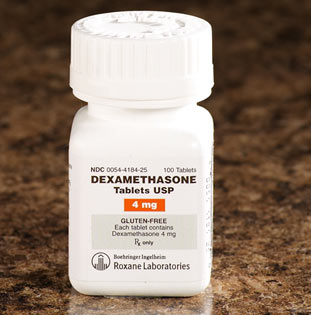Serendip is an independent site partnering with faculty at multiple colleges and universities around the world. Happy exploring!
"Dex" and Diversity

"Dex" and Diversity: A Message to the Medical Community
In the interest of full disclosure, I will begin with what I am not: I am not a doctor or a nurse. I have never been to medical school or completed a residency, and I’ve never conducted a physical or delivered a baby. Nor, for that matter, have I ever had to advise a scared and confused parent-to-be on how to best ensure the health and well being of an unborn child. Now that you know what I am not, here is what I am: I am a woman. I am someone’s child and someone’s sister. I am a student of gender and sexuality studies who embraces diversity and difference and discussion. It is with these credentials that I write to ask you to reevaluate what the medical community currently labels as "normal" and "healthy" and to push you to reconsider the lines you draw between what it is to help and what it is to harm. Below is my take on a rather contentious topic that is becoming increasingly relevant in today’s society: interfering prenatally with the gender of an unborn child. I use the controversy surrounding the “treatment” of a specific genetic disorder to highlight the importance of autonomy and self-expression through bodily diversity, and through this discussion I urge you to consider a change in perspective on the definition of normalcy with respect to gender.
The first attempts at manipulating the gender of an unborn child involved simple changes in lifestyle. Eat lighter foods to conceive a girl and heavier foods to conceive a boy. Do one exercise to increase your daughter’s beauty, another to bolster your son’s strength. Today, the incessant desire to prenatally influence children’s gender is further enabled by advances in technology. Fertility clinics offer procedures like flow cytometry and the gradient method that separate X bearing sperm from Y bearing sperm, and there are even procedures available that can analyze the DNA of embryos and ensure a 99% chance of implanting an embryo of the desired sex, meaning an embryo that will physically develop either female or male sex organs, into the uterus. These procedures, while morally and ethically questioned by many, are available to individuals with enough money and cultural capital to navigate through the legal system. Now, however, there is a drug available that researchers claim can physically alter not just the type of sex characteristics a fetus develops but the appearance of those characteristics as well, and that drug is dex.

Dexamethasone, better known as dex, is currently at the center of a controversy involving a genetic disorder called congenital adrenal hyperplasia, which affects about 1 in 16,000 newborns. A disorder of the adrenal glad, which is essential in releasing hormones in response to stress, CAH prevents the production of the hormones cortisol and aldosterone, which disrupts the body’s internal regulation processes and in turn allows the endocrine system to produce an abnormally large amount of other types of hormones called androgens. These are the hormones that masculinize a fetus in utero, prompting the growth of a penis, a scrotum, and other parts of the male anatomy. Androgens also prompt the development of secondary sex characteristics during puberty, such as the growth of facial and pubic hair as well as an overall increase in muscle mass. While females also produce androgens throughout the lifespan, they typically produce them at far lower levels than males. However, females with CAH are an exception. Because of their disorder, female fetuses with CAH often develop more ambiguous-looking genitalia, a process known as virilization, which continues to be treated as problematic by parents and medical professionals alike. And that’s where dex comes in.
Originally developed as a drug to fight cancer, dex is now being prescribed off-label for mothers who are carriers of CAH and could potentially pass the disorder on to their unborn daughters. However, dex does not cure CAH, nor does it preclude the necessity for lifelong treatment. Those who inherit the disease will still face cardiac arrhythmias, electrolyte deficiencies, and even death without a proper medical regimen. No, dex’s purpose when prescribed to pregnant carriers of CAH is to increase the likelihood that female fetuses will develop without androgynous features, particularly with respect to their genitals. Thus, babies with an XX karyotype who have CAH but are not exposed to dex early in their prenatal development are more likely to have “abnormal vaginas”, “abnormal sexual preferences” (i.e. bisexuality and homosexuality), and “abnormal play preferences and peer interactions”, meaning preferences we typically associate with males (Nimkarn & New, 2010). Based upon their findings, researchers suggest that the administration of dex to prevent genital and behavioral abnormalities will preclude “potentially devastating” consequences, particularly genital reconstruction surgery, later in life.
As you absorb this information, perhaps your first reaction is to support the administration of dex prenatally to protect a child from future suffering. After all, reconstruction surgery is both serious and painful, and if there is a drug that will prevent a patient from suffering from physical and emotional anguish, why not endorse it? I counter this question with another question for your consideration: why do you assume the child in question is going to suffer without the use of dex? Her genitals will function regardless of their appearance. With steroid treatment for her CAH, she will grow up a physically healthy child. I’ll answer your question: you assume she’ll suffer because some part of her body is abnormal. Since it doesn't match the model in your anatomy book, you assume she’ll be embarrassed the first time she plays the “I’ll show you mine if you show me yours” game right up to her first sexual encounter, and the shame of having a larger clitoris or labial fusion will cause her a great deal of inner turmoil. These assumptions are based upon the obsession our culture has with normality, particularly with respect to our bodies. Normal is our security blanket, our way to assess what is natural and comfortable, but we often use normal as a comparative standard, as though anything that does not measure up is unnatural and wrong. The medical community particularly embraces the idea of standard bodily norms, since the practice of medicine is grounded in the idea that things that aren’t normal need to be cured or healed. I urge you to consider the notion that a child will be just fine with both the way her genitals look and her sexual preferences. Perhaps by administering dex physicians are calming the anxieties of parents rather than aiding children and in doing so are taking an essential part of a child’s agency away: her ability to choose who she wants to be. In this misguided quest for gendered normalcy, an unborn individual loses some powerful aspect of personal expression even before she has taken her first breath.

Sculptor James McCarthy's "The Great Wall of Vaginas"
To prevent such unnecessary losses in agency, it’s time for a change in perspective, and you as medical professionals have the power to facilitate this change. With your title inevitably comes an unspoken promise of expertise and truth, and the more you assert that there is nothing medically or physically wrong with functional genitalia regardless of its appearance, the more society will listen. As a result, the concept of gendered normalcy will be redefined for the better. It’s not enough to share this perspective with others, either; you must practice what you preach for the message to be most effective. Instead of prescribing a drug like dex that can alter a body without permission, wait. Listen to each patient’s wishes, and if someone is uncomfortable, offer options. That’s perfectly okay. What’s not okay is to alleviate options before someone is able to consider them. If you alter what one is, you may alter who one is, and that is a mistake that can never be rectified.
References
Dreger, Alice, Ellen K. Feder, and Anne Tamar-Mattis. "Bioethics Forum Blog - Preventing Homosexuality (and Uppity Women) in the Womb?" The Hastings Center - Bioethics and Public Policy. 29 June 2010. Web.
Elton, Catherine. "Medical Ethics: Prenatal Dexamethasone Use Questioned." TIME Health. TIME Magazine, 18 June 2010. Web.
"Fertility Treatment: Gender Selection." A Great Resource For The Causes Of Infertility, Infertility Treatment, And The Best Ways To Get Pregnant. Web.
Lajic, Svetlana. "Prenatal Treatment of Congenital Adrenal Hyperplasia." Congenital Adrenal Hyperplasia Research Education & Support. CARES Foundation. Web.
Meyer-Bahlburg, Heino F. L., Curtis Dolezal, Susan W. Baker, and Maria I. New. "Sexual Orientation in Women with Classical or Non-classical Congenital Adrenal Hyperplasia as a Function of Degree of Prenatal Androgen Excess." Archives of Sexual Behavior 37.1 (2008): 85-99. PubMed. Web.
Nimkarn, Saroj, and Maria I. New. "Congenital Adrenal Hyperplasia Due to 21-hydroxylase Deficiency." Annals of the New York Academy of Sciences 1192.1 (2010): 5-11. Web.
Images: http://www.drsfostersmith.com/images/Categoryimages/normal/p-50556-45434-dexameth.jpg



Comments
"wait...."
Sel209--
As in your first web event, I’m impressed here with your choice of a vivid image to bring home your point—McCarthy’s “great wall of vaginas” makes your point about bodily diversity about as graphically as can be!
When we were last talking together on line, our discussion centered on the disabling nature of social perceptions (a concept you continue to explore here, of course) as well as about your "insecurities about perceptions of yourself as an author." It seems to me you’ve confronted that latter challenge head-on here, by beginning with a list of all that you are not, followed by a list of all that you are: your introduction offers a wonderful balance of authority-and-humility, I think, which tells us exactly wherefrom you speak, and why, and w/ what authority.
I think your letter is a very compelling one, and I want it to reach its audience. Where might it actually be directed? (Is the world wide web large enough an audience for you? Or is that too undirected?)
Since I’m just getting to this paper several weeks after you wrote it, my reading is now of course diffracted through all the philosophy that’s been a-swirl on campus this past week. You’ve just posted about your frustrations in hearing Barad talk, and reading your pointed, succinct, clearly argued and positioned paper now gives me a (clarifying!) lens for diffracting “back” what was for you such a frustrating presentation.
Barad’s talk was directly connected to issues of both gender and sexuality: not metaphorically or analogically, but by making a profound claim about what we can learn from the which-slit experiment, the "great identity experiment" whereby light can be –depending on how you ‘cut’ it--either wave and particle, ontologically distinct phenomenon. Identity is “undone @ the heart of matter itself”; the quantum itself is “queer” in its behavior. This weirdness does not begin @ the level of human decision-making, like that of those doctors you are addressing.
They too could benefit from some quantum theory, some unsettling of certainty and belief in control. I love your final advice to them: to wait, be patient, see what might unfold in time. And so I send your own counsel back to you: to give yourself time to understand some of the ramifications and complexities of all we have been learning and seeing.